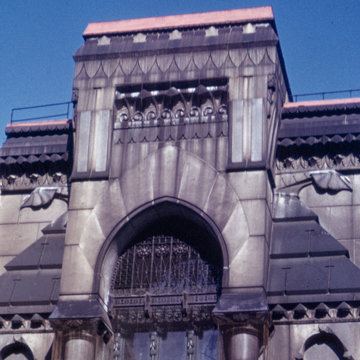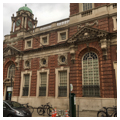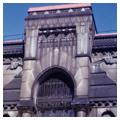You are here
Citizens Bank (Corn Exchange National Bank)
With its off-center tower, this bank recalls half of Christopher Wren's composition for the Greenwich Naval Hospital, although there is no answering tower across the street. The Corn Exchange National Bank marks the eastern limit of the banking district and the last bank of consequence in the old city. Its assured and elegant historical form would have stood out among the Victorian excess and eccentricity of Bankers’ Row, then dominated by the buildings of Frank Furness. Most of these have been torn down, including the Guarantee Trust and Safe Deposit Company (1873–1875) at 316–320 Chestnut Street, the National Bank of the Republic (1883–1884) at 313 Chestnut Street, and, wildest of all, the Provident Bank (1876–1879).
Writing Credits
If SAH Archipedia has been useful to you, please consider supporting it.
SAH Archipedia tells the story of the United States through its buildings, landscapes, and cities. This freely available resource empowers the public with authoritative knowledge that deepens their understanding and appreciation of the built environment. But the Society of Architectural Historians, which created SAH Archipedia with University of Virginia Press, needs your support to maintain the high-caliber research, writing, photography, cartography, editing, design, and programming that make SAH Archipedia a trusted online resource available to all who value the history of place, heritage tourism, and learning.











